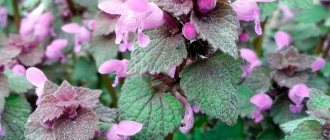In common parlance, proud gladioli are called swordsmen - they very much resemble a sword pointing upward. At the end of summer, these flowers are the basis for many bouquets. Before the start of the school year, flower tents are full of gladioli; they are displayed at spontaneous markets.
Author of the article
Maxim Sverchkov
Professional biologist and breeder with extensive experience and experience.
And in almost every yard you can see flower beds with skewer on them.
Numerous legends associated with gladioli speak of it as a flower of courage and chivalry. Blooming gladioli symbolize the victory of the masculine principle.
general information
Gladiolus is a capricious perennial that requires a lot of attention at any time. The height of the powerful straight stem reaches 1.5 m, and it is surrounded by hard thin leaves about half the height. The rest is occupied by a powerful inflorescence, on which large buds are densely collected.
The root system of gladioli consists of corms on which thin small roots grow. These bulbs are covered with dense scales, from under which sprouts hatch. In fact, each bulb is renewed annually.
The timing of flowering depends entirely on the specific species and variety. Some bloom at the very beginning of summer, while others bloom closer to autumn. Funnel-shaped flowers are collected in arrow-shaped inflorescences and gradually open from bottom to top.
Photo: fr.wallpaper.mob.org
Neighborhood choice, beautiful combinations
Due to the unusual shape of the peduncle, it is difficult for gladiolus to choose a companion, so the plants are used as a tapeworm. When choosing a neighborhood, designers pay attention to the biological and decorative compatibility of species. There are options that allow you to create harmonious compositions.
monoflower
Skewer is a self-sufficient plant that does not need to be combined with other species. Regardless of the number of buds, diameter or color, gladioli always look luxurious in a flower bed. Shades often depend on light intensity and soil acidity. There are rich bright and delicate pastels. Contrasts and gradient transitions of tones look impressive.
Red and white flowers Source diz-cafe.com
Combining different types Source botanichka.ru
To prevent gladularia from becoming tasteless, you cannot use many different shades. For a flower bed of gladioli, combinations of 2-4 colors are suitable; too much will add tackiness to the landscape design. The option of plants of the same tone, collected in a single composition of 8-10 copies, looks elegant.
Bright plant in a flower bed Source yandex.ua
Gladioli are often planted along paths or fences. To prevent the flower garden from resembling a plantation, you should not plant more than 6 rows. Speech petals can be simple smooth or complex corrugated, in the form of folds or fringe. Plants look great both near the entrance to the house and at the entrance to the site. A beautiful border of low-growing varieties will become a striking element of the landscape.
Flower of rich shade Source yandex.ua Color options for decor Source decorathing.com
To beautifully plant gladioli, designers use the game of sizes of bushes and arrows. Large varieties are planted in the center of the monoflower; closer to the edge, the plants gradually decrease. Varieties with small flowers (5-7 cm) will be lost against the background of their giant counterparts (15-20 cm), so species of the same diameter are selected.
Background for skewer
A properly selected background helps highlight the gladioli. Designers recommend using evergreen shrubs and conifers as a basis. The shades of the flower benefit from the background of a boxwood fence or plantings of juniper, spruce or thuja. The beauty of the plant will be emphasized by the unusual shape of castor beans or the graceful branches of kochia.
Decorative fence Source zen.yandex.kg
Hostas are an ideal complement to skewer. Decorative perennials with beautiful flowers visually shade gladioli and hide the bare lower part. A variety with a white border or glossy leaves is often used to decorate flower beds. The background for the base of the composition will be made by a hybrid with raised veins or curly edges. Options with light plates can be combined with petals of bright, rich colors.
Decorative gooseberry is an unpretentious ground cover species with unusual foliage. The culture is used to fill empty areas under gladioli. Openwork light green plates with white edging will become an effective backdrop for high and low swordsmen.
Flowerbed of continuous flowering
According to the timing of flowering, gladioli are distinguished as early, middle and late. Depending on the variety, between planting and the dissolution of the petals, it takes from 70 days to 3 months. With the right selection of plants, you can get a flowerbed that will delight you throughout the summer and early autumn.
Flower garden near the house Source yandex.ua
In early spring, bulbous species bloom, then the time of gladioli comes. Tulips and daffodils, hyacinths and crocuses, snowdrops and muscari co-exist perfectly as predecessors for swords on the site. At the end of summer, all the plants are dug out from the flowerbed.
Designers collect a luxurious flower garden from different cultures. Spring is given over to bulbous species; the herbaceous peony will bloom in May-June. After the fragrant bush, it will be the turn of gladioli. In mid-summer, paniculate hydrangea blooms. The effect of endless flowering is created, which gradually moves from the ground to the height of human growth.
With annuals
Swordweed is dug up in the fall, so in landscape design they prefer to grow it with annuals. Gladiolus will become the center of the composition, the rest of the plants are used for edging. Compact marigolds or bright pansies are planted next to tall flowers.
You can grow fragrant tobacco next to the sword. Low- and medium-growing species of aromatic plants repel pests and complement the beauty of tall flower stalks. The variety of shades and shapes of buds allows you to choose a hybrid that will highlight the decorative effect of the gladiolus.
Options for a mobile flower garden Source gardening.kittens-world.ru
In the domestic climate, tricolor bindweed is grown as an annual. A low-growing climbing plant with gramophone buds will create a spectacular soil carpet under a tall gladiolus in its background.
A herbaceous plant with a peduncle in the shape of a low pyramid resembles a gladiolus. The annual has a wide palette of shades - from snowy white to rich burgundy. There are hybrids with petals of different tones. In combination with swords, designers recommend using low-growing (up to 40 cm) and dwarf (15-25 cm) species.
Zinnia angustifolia is a beautiful annual with bright daisy flowers that will turn the flowerbed space into a thick carpet. The compact, low-growing appearance complements rather than competes with the proud beauty of the gladiolus. Designers recommend using multi-colored mixtures of varieties, creating a colorful addition to the base of the composition. The crops have the same growing requirements.
Gladioli in a pot Source aliexrus.ru
With perennials
A harmonious neighborhood will help to plant gladioli beautifully. Rudbeckia should not exceed the height of the peduncle of the main plant. The dense greenery hides the spiky foliage of the fennel, creating a lawn effect. Bright buds with a dark core bloom in July and bloom until the first frost.
Successful color combination Source yandex.ua
Garden with different flowers Source yandex.ua
Types of gladioli
The number of decorative varieties of gladioli has long exceeded one hundred. But first, let's look at the main types and their differences!
Common gladiolus
One of the most common species, which became the basis for many modern miracles of selection. It is tall, up to 1 m, with long thin leaves and voluminous inflorescences up to 20 cm in length.
Photo: domashniecvety.ru
Swamp Gladiolus
It grows in swampy regions and is compact in size. It has a thin stem up to 60 cm and approximately 5-8 purple flowers per peduncle.
Photo: commons.m.wikimedia.org
imbricated gladiolus
In nature, this is a very small species, up to 50 cm, but in culture it can easily be grown to almost twice that size. The inflorescence is one-sided, but the number of buds reaches 14 pieces.
Photo: zapovednytur.by
Byzantine gladiolus
In nature, it prefers forests and lawns, and blooms during the summer. Despite the small size of the peduncle, the flowers themselves are quite large - up to 6 cm.
Photo: onlineplantguide.com
Gladiolus Kochi
A charming mountain variety with the same charming purple buds on a thin but strong shoot. It has narrow linear leaves and a small bulb with a leathery outer shell.
Photo: plantarium.ru
Catharanthus (60 photos): types, planting, care and cultivation
Description
Gladioli can often be seen in garden plots; they become decorations for flower beds. Otherwise, the plant is called fudge. It belongs to perennial crops.
Gladioli are called this because of their sword-shaped foliage. In ancient times, this was the name given to bladed weapons. The sword is also named for its blade-like shape.
Gladiolus grows everywhere. It grows in southern countries, as well as in harsh climatic zones. In ancient times, gladiolus was eaten and used as a talisman.
In the flower beds grow hybrid varieties that were bred from wild ones. They often reproduce underground. The roots are renewed every year by the growth of “children”.
The tuber is covered with a scaly shell that has a variety of colors. There are bulbs of white, red, pink, dark cherry and even almost black.
Arrows grow upward a few weeks after planting. They form leaves that close around the stem. The foliage is dense and blue-green in color.
Peduncles bloom from late spring in the southern regions, in more northern regions - in mid-June. Gladioli are pleasing to the eye for 2 weeks, after which the arrows begin to dry out, producing seeds that are placed in a special box.
Gladioli care
Gladioli can hardly be called unpretentious. They have specific requirements for everything from storing bulbs to cutting flower stalks. But we tried to highlight the main points!
Temperature
Gladioli tolerate the temperature and climatic conditions of our latitudes well. But here it is important to choose the right variety, adapted to a particular region. Because bulbs from warm countries do not tolerate planting in the cold north.
Photo: zen.yandex.ru
Lighting
Gladioli need light, because in the shade you may not be able to wait for flowering at all. This is especially true for late varieties; some early varieties can still be grown in partial shade, but they will bloom later.
Photo: pixabay.com
Watering
It is recommended to water gladioli not too often, but abundantly. In normal times, once a week is enough, but if the drought lasts, then increase the frequency depending on the situation. Always after this, loosen the soil and remove the weeds.
Photo: dizainexpert.ru
The soil
Gladioli need slightly acidic, light and fertile soil. But they have a specific feature. You cannot grow bulbs in one place for more than 2 years, and when replanting, it is better to choose an area with a different type of soil.
Photo: badschool.ru
Fertilizers and fertilizing
Gladioli need to be fed separately to increase leaf mass and for flowering. The first feeding is at the very beginning of the growing season, then - when the buds are forming.
Photo: vosadu-li-vogorode.ru
Trimming
The powerful flower stalks of gladioli take a lot of energy from the bulb. Therefore, many gardeners argue that it is better to admire such flowers as a cut flower than in a flower bed. In any case, the sooner you remove the flower stalks, the better it is for the plant.
Trim the flower stalks so that each leaves at least 4 leaves, but the “stump” is completely hidden in them. Immediately after the procedure, reduce watering to a minimum and feed the plant so that the bulb accumulates useful substances. Especially if you still remove the flower stalks after flowering.
Photo: m.fotostrana.ru
Bulb storage
In the second half of September, carefully remove the bulbs with a pitchfork along with the roots, rinse and inspect. Throw away any bulbs that are small, too old, sickly or damaged. Trim the roots, disinfect, dry well on paper and put them in a mesh box. Store them there for 2-3 weeks at +25 degrees and above.
Reduce the temperature to +20 degrees for another 4-6 weeks, and stir the bulbs periodically all this time. Then you can send them for permanent storage at a temperature of about +6 degrees. For the smallest and youngest, reduce it to +3 and increase the humidity to 90%.
Photo: kudamoscow.ru
Forget-me-nots (60 photos): types, care and cultivation in open ground
HOW TO CORRECTLY REMOVE GLADIOLUS BULBS
Gladiolus bulbs are not winter-hardy enough, so they are dug up every year and stored until next summer. This is done in early October (not earlier, since the corms must fully ripen!). The weather should be warm and clear.
The upper part of the gladioli is cut off, and the corms are carefully removed from the ground, cleaned of it, disinfected in a pink solution of potassium permanganate, wiped with napkins and laid out on sheets of paper in some dry, warm room to dry.
Over the summer, more than a dozen small baby bulbs can form on old bulbs. They need to be very carefully plucked from the mother plant with your hands and laid out to dry on a separate sheet of paper.
The bulbs are kept indoors for about two weeks. After this, they are placed in paper bags, several at a time, and put away in the basement or on the bottom shelf of the refrigerator. There they will be stored until next season.
Planting and propagation
A month before planting the bulbs, sort them again and remove the toughest scales. Place in a warm place in the light in one layer with the sprouts facing up. Before planting, treat with special antiseptics. The planting depth depends on the type of soil: for heavy soil it is approximately 3 bulb diameters, and for light soil it is 4.
Children are prepared in the same way - first remove the hard shell, and then warm it. But the light should be diffused, because they are more gentle. Plant gladioli in rows at a distance of 7 to 15 cm, depending on size. Add a layer of sphagnum to the bottom to regulate acidity and drainage.
We recommend planting bulbs according to size, gradually moving from large to small. Otherwise, the big ones will not allow the small ones to develop and will draw all the resources onto themselves.
In nature, gladioli are often propagated by seed, but in everyday life this is time-consuming, inconvenient, and the flowers do not retain their varietal characteristics. This method is only suitable for the southern regions.
To propagate with a bulb, you just need to select high-quality and healthy material. They are simply cut vertically in half so that a fragment of the bottom and bud remains on each part. The larger the proportion of the bulb, the faster the plant will develop. You need to cut it a couple of days before planting so that the cut dries.
In addition, tubers are used for propagation, but their number and appearance greatly depend on the variety. These are small, seemingly underdeveloped shoots with rudiments of leaves that are just finishing forming towards the end of the season. Then they can be separated.
Photo: samisrykami.ru
Classification of flowers with the names of popular varieties of this type
There are five generally accepted classes. The division occurs according to the size of the flower.
- Mini, size 6-6.5 centimeters, height - no more than half a meter. Inflorescences consist of 12 - 15 flowers. The petals are most often corrugated. The most popular varieties are Small Walder and Wee Walder.
- Small - size varies from 6 to 9 centimeters. The popular variety Sezan, like Focus, has a double color.
- Gladioli are medium, the size of each, according to generally accepted standards, cannot be more than 11 centimeters. The flowers of the Elegy variety are deep crimson in color and resemble velvet in appearance. The inflorescences of the popular Albit species are white, each with a green spot in the center.
- The next class is gladioli with large flowers. Size 12-14 centimeters. The Amethyst variety has an uneven color and combines three colors: pink, burgundy, black. The Don Quixote variety, popular in Russia, is dark cherry colored.
- Giant varieties include plants with flowers over 14 centimeters. It is very difficult to purchase in Russia. The most famous are Green Star, White Prosperity.
Annuals
Perennial Gladioli flowers - description
Due to the climatic conditions of Russia, gladiolus is grown as an annual plant.
At the end of autumn, the bulbs must be dug up and only planted again the next year.
Perennial
Only so-called wild gladioli can be grown as perennials.
For reference! The tiled variety can withstand even severe winters. The inflorescences consist of five to six flowers, the color is pink or purple.
Dwarf
Miniature gladioli, or so-called dwarf gladioli, are a favorite variety of all gardeners. They begin to bloom early, the stems are compact, there are 7-8 flowers in an inflorescence. Can be one-color or two-color.
Average
Medium varieties include:
- Charm variety, pink color.
- Jade, lemon yellow flowers.
Long
The most popular in this group are:
- Nymph, white with red streaks.
- Sun aid, purple flowers.
By color
There are eight common colors of gladiolus.
- Red, the most popular varieties are Zulu and Baccarat.
- Cherry, Black Velvet variety.
- Pink Prague.
- White gladioli Tampere.
- The Green Star variety is green in color.
- Torino has dark brown flowers.
- The inflorescences of the Gates of Heaven variety are deep blue.
- The most unusual representative is the black gladiolus of the Ebony Beauty variety.
According to the shape of the edges of the petal
Gladioli flowers are also divided by the type of petals.
- simple;
- with fringe;
- corrugated;
- dragon-like;
- in the fold.
Types of gladiolus flowers
According to the arrangement of flowers in the inflorescence
On the stem, flowers can be arranged in one row, in two rows or in a spiral.
By flowering time
On gladioli with early ripening, flowers appear around the 70th day.
Mid-season plants are those that begin to bloom after the 90th day.
Late flowers appear only 100 days after planting in open ground.
Pest and disease control
Gladioli suffer from a typical set of bulbous plants, and they have mediocre immunity. Therefore, first of all, be sure to carefully select planting material and treat the bulbs with special preparations. It makes sense to carry out preventive spraying with fungicides and insecticides.
The most dangerous disease is dry rot, which affects all parts of the plant from the bulb to the tips of the leaves. Brown spots appear everywhere and the plant withers. Sick gladioli must be completely removed, destroyed and the hole treated with medications.
Gray mold results in soft, watery spots and is most often caused by too much humidity. In the early stages, treating the bulb with fungicides and drying can help. The same treatment is used for scab, the symptoms of which are red-brown spots on the stem.
Bacterial canker appears as bumpy growths on the bulb, and there is no cure, so the plant must be destroyed. The same applies to viral mosaic and jaundice, in which the leaves change color and the plant becomes smaller and degrades.
Thrips and wireworms are dangerous pests. Regular spraying with insecticides at least three times per season and treating the bulbs before storage helps. Also, do not plant gladioli in an area where potatoes or carrots previously grew.
Photo: orchardo.ru
Dicentra (50 photos): types, proper care and planting
Possible problems in growing
Despite the unpretentiousness of the species, it is often attacked by all kinds of pests. Due to improper care, gladiolus can get sick.
- Pests. The main parasites that harm the plant are thrips, mites, and garden ants. Less commonly, the common aphid. Timely treatment of the flower with insecticidal agents will not only protect the damaged plant from pests, but will also serve as a prophylactic agent.
- Diseases. Most often, flowers are susceptible to fungal diseases. For prevention, it is necessary to treat not only the plant, but also the planting material. Phytosporin is considered the best remedy for these purposes. Treatment with this drug can be carried out throughout the season.
- Signs of improper care. The most important sign that proves that the plant has not received due attention is the absence of flowers on the gladiolus. This trouble can arise due to untimely watering or poor quality care.
Gladiolus is a generally recognized royal species. Not everyone is able to grow this elegant work of art from a small bulb. The flower requires constant care and close attention. If a gardener is not confident in his abilities, then it is better to first try to grow something simpler and not so capricious. But, despite all the difficulties, the risk justifies the result.
Gladioli - photo
Yes, gladioli are demanding, capricious and require a lot of tricks. But isn't their beauty worth it?
Photo: oir.mobi Photo: artmaki.su
Photo: 7dach.ru Photo: 2sotki.ru Photo: kartoska.ru
Photo: 7dach.ru
Photo: zen.yandex.ru Photo: flo.discus-club.ru
Photo: flowers-nnov.ru Photo: 2sotki.ru Photo: pixabay.com Photo: uradachainfo.ru
Photo: babushkinadacha.ru
Photo: 2sotki.ru
Photo: flo.discus-club.ru
Photo: metoffice.gov.uk
Photo: hortus.ru
Photo: shkolazhizni.ru Photo: youtube.com Photo: pixabay.com Photo: domashniecvety.ru
Photo: zen.yandex.ru
Did you like the post? Subscribe to our channel in Yandex.Zen, it really helps us in our development!
Using gladiolus in landscape design
Bright and slender stems of gladiolus, crowned with spike-shaped inflorescences, serve as an excellent decoration in group plantings, mixboards, and multi-color flower arrangements. Gladioli are great for cutting - they last a long time and look great in bouquets and flower panels.
Some sources:
- Flower No. 18 September 2020
- Bible of garden plants / I. Berezkina, N. Grigorieva
- Bulbous flowers / A. Belyakova
Elena Chursinova A practical gardener with twenty years of experience. I prefer organic farming and lazy gardening.











